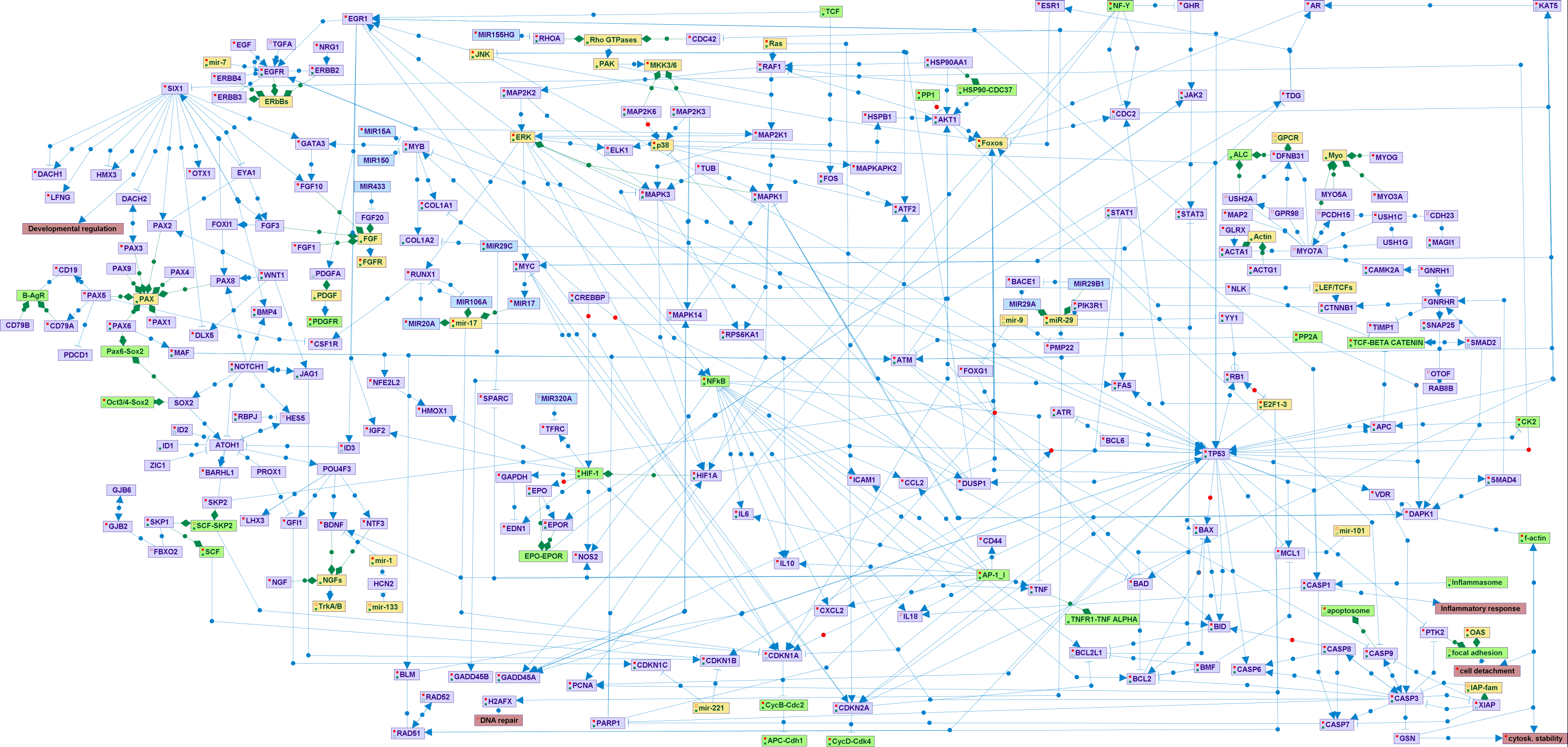The genes related to Usher syndrome may shed light on proteins that play important roles in normal hearing, as well as in vision. Those proteins function in the development and maintenance of hair cells, the sensory cells in the inner ear, as well as in determining the structure and function of the sensory cells in the retina, the rods and cones. In some cases, the exact role of these genes in hearing and vision is unknown. Most of the mutations responsible for Usher syndrome lead to a loss of hair cells in the inner ear and a gradual loss of rods and cones in the retina. Mutations in Usher (USH) genes cause degeneration of these sensory cells, leading to visual and acoustic-vestibular deficits in humans. Several of the affected genes involved in Usher syndrome have been identified, including MY07A, USH1C, CDH23, PCDH15, SANS and others. In addition, many other proteins, not related to USH, are known to be expressed and to have roles in the ear as well as in the eye. These genes are implicated in all cell functions, e.g., the SIX1 pathway is involved in development, the BCL family has a role in DNA repair, the Tp53 and CASP networks are related to apoptosis. The HEarSpike map of hearing and vision shows interactions between proteins expressed both in the ear and in the eye.
